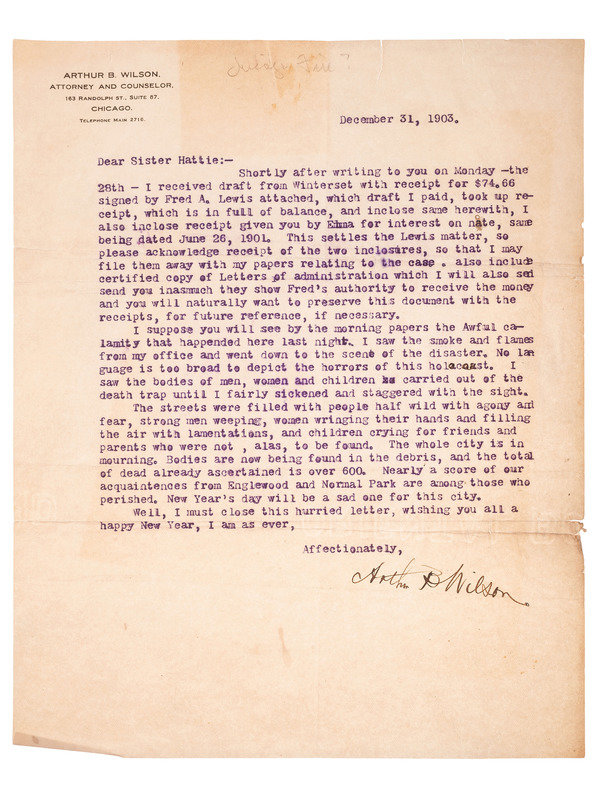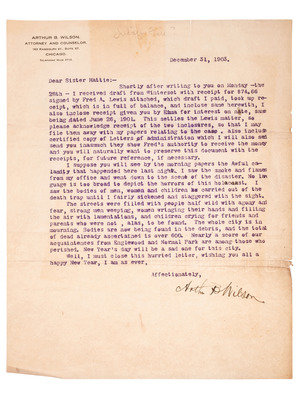Lot 170
[CHICAGO - IROQUOIS THEATER FIRE]. Eyewitness letter written in the aftermath of the Iroquois Theater Fire.
Sale 1069 - American Historical Ephemera & Photography
Lots Open
Aug 19, 2022
Lots Close
Aug 30, 2022
Timed Online / Cincinnati
Own a similar item?
Estimate
$300 -
500
Lot Description
[CHICAGO - IROQUOIS THEATER FIRE]. Eyewitness letter written in the aftermath of the Iroquois Theater Fire.
WILSON, Arthur B. Typed letter signed ("Arthur B. Wilson"), to his sister Hattie. Chicago, IL, 31 December 1903. 1 page, 4to, old folds, some toning.
Arthur B. Wilson, a Chicago lawyer, writes to his sister initially addressing business but continuing with his eyewitness account of the Iroquois Theater Fire: "I suppose you will see by the morning papers the Awful calamity that happened here last night. I saw the smoke and flames from my office and went down to the scene of the disaster. No language is too broad to depict the horrors of this holocaust. I saw the bodies of men, women and children carried out of the death trap until I fairly sickened and staggered with the sight." He continues: "The Streets were filled with people half wild with agony and fear, strong men weeping, women wringing their hands and filling the air with lamentations, and children crying for friends and parents who were not, alas, to be found. The whole city is morning."
Wilson's office was on 163 Randolph Street, a short distance from the Iroquois Theater at 24-28 Randolph Street which had newly opened on 23 November 1903. Despite being billed as "Absolutely Fireproof," several authorities including an editor of Fireproof Magazine and a Chicago Fire Department captain noticed severe deficiencies. On 30 December, an arc light malfunctioned during a matinee performance with a sold-out, standing-room-only audience and ignited a muslin curtain. The conflagration quickly spread and the crowd of over 2,000 were confounded in escaping the building. There was only one main entrance, and many fire exits remained closed as they had unfamiliar bascule locks. The disaster prompted national and global reform in building codes, including the implementation of panic bars. Over 600 perished in the fire, far more than in the Great Chicago Fire, and it remains the deadliest single-building fire in United States history.
This lot is located in Cincinnati.
Property of a Midwest Collector
Condition Report
Contact Information

